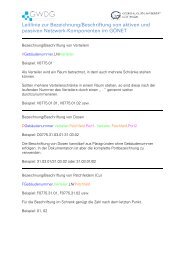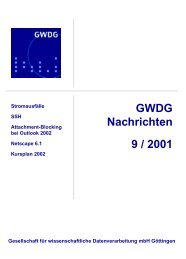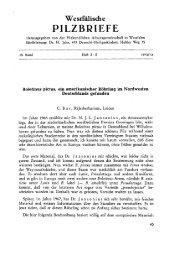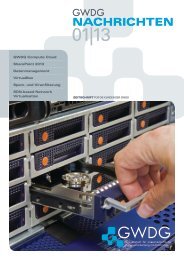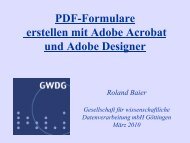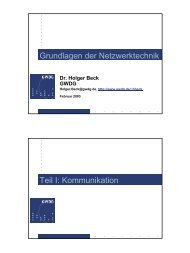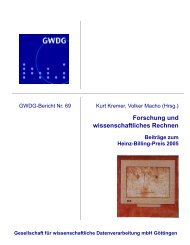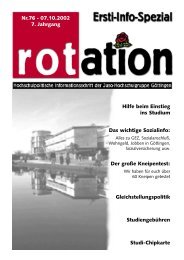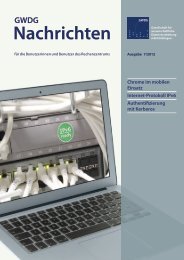Create successful ePaper yourself
Turn your PDF publications into a flip-book with our unique Google optimized e-Paper software.
Empirical Justification for the Patterns<br />
Höche (2009): usage data<br />
British National Corpus (BNC); 400 verbs; over 3,000 sentences<br />
with a potential COC.<br />
<strong>in</strong>def<strong>in</strong>ite vs. other patterns: 33.4% of the COCs without modifier;<br />
64% thereof def<strong>in</strong>ite (Höche, 2009, p. 209ff)<br />
Type of modifier (Höche, p.c.)<br />
<strong>in</strong>def<strong>in</strong>ite vs. def<strong>in</strong>ite pattern:<br />
PP : Adjektiv<br />
COs with the: 164 : 174<br />
COs with a/an: 137 : 788 (significant preferance for Adj)<br />
passive:<br />
almost all examples <strong>in</strong> Höche (2009) def<strong>in</strong>ite;<br />
all examples <strong>in</strong> Kuno and Takami (2004) without modifier.<br />
Manfred Sailer (Gött<strong>in</strong>gen) <strong>Cognate</strong> <strong>Objects</strong> HPSG 2010 11 / 39



